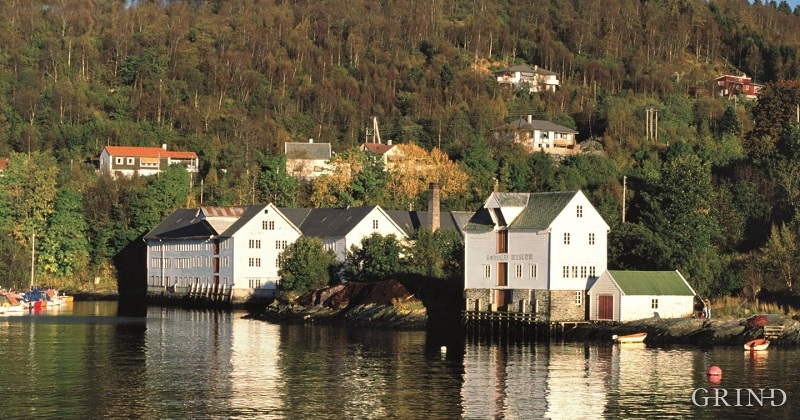It was the abolishment of the craft law in 1839 that caused the tanning enterprises in Nordhordland to take off in earnest. In communities where there was a need for additional work places the initiative was great. Many farm tanneries worked with simple equipment with a tanning cauldron in the cellar or out of doors. But tanning the leather to make it into viable goods for trade required knowledge and skill, and this knowledge was handed down to the next generation in certain families. The first tanner we know of in Nordhordland was Nils Torson Skåldal from Haus, who started a tanning enterprise at Breistein in 1804,in combination with shoemaker’s enterprise. His grandson, Nils Torson, moved to Alversund in 1860 and started at tannery at Kråkevik. Many farmers from Sogn, Sunnfjord and Nordfjord supplied skins and collected leather in Kråkevik. Slowly there were more tanneries in Alversund and Meland than in any other place in the county.
But the biggest tannery community was Valestrand. Hosanger was another early one, and in 1875 there were 11 tanneries in the rural community. Two brothers from Hosanger, Lars and Johannes Rosland came to Valestrand in 1833 and started a tannery enterprise at Reigstad. Johannes wet to Isdal in Lindås in 1848 and set up a tannery activity there. Another tanning dynasty in Valestrand was Rundhovde. Nils Rundhovde started with bark containers at home on his farm in 1835. Thus we see that this craft industry expanded and became a secure source of income through several generations.
The old tannery buildings were preferably situated by a stream or a river in order to lead water into the bark containers. Above was an airy loft where the leather could be dried. In 1879 Nils T.Reigstad erected a large tannery by the sea at Valestrand, the largest in the area. Right up to the 1970s the tanneries were important places of employment. “The Karla Tannery” in Jofjøra, on the east side of the bay, was built by Karl Reigstad around 1910. Here waterproof leather, for use in shoe production was a speciality. The building today has been transferred to Osterøy Museum.



